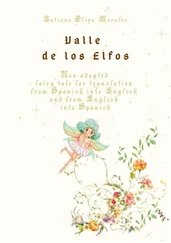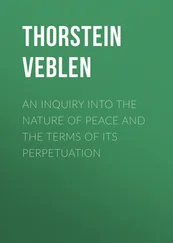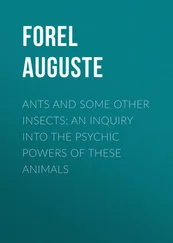Robert Pirsig - Lila. An Inquiry Into Morals
Здесь есть возможность читать онлайн «Robert Pirsig - Lila. An Inquiry Into Morals» весь текст электронной книги совершенно бесплатно (целиком полную версию без сокращений). В некоторых случаях можно слушать аудио, скачать через торрент в формате fb2 и присутствует краткое содержание. Жанр: Современная проза, на английском языке. Описание произведения, (предисловие) а так же отзывы посетителей доступны на портале библиотеки ЛибКат.
- Название:Lila. An Inquiry Into Morals
- Автор:
- Жанр:
- Год:неизвестен
- ISBN:нет данных
- Рейтинг книги:3 / 5. Голосов: 1
-
Избранное:Добавить в избранное
- Отзывы:
-
Ваша оценка:
- 60
- 1
- 2
- 3
- 4
- 5
Lila. An Inquiry Into Morals: краткое содержание, описание и аннотация
Предлагаем к чтению аннотацию, описание, краткое содержание или предисловие (зависит от того, что написал сам автор книги «Lila. An Inquiry Into Morals»). Если вы не нашли необходимую информацию о книге — напишите в комментариях, мы постараемся отыскать её.
Lila. An Inquiry Into Morals — читать онлайн бесплатно полную книгу (весь текст) целиком
Ниже представлен текст книги, разбитый по страницам. Система сохранения места последней прочитанной страницы, позволяет с удобством читать онлайн бесплатно книгу «Lila. An Inquiry Into Morals», без необходимости каждый раз заново искать на чём Вы остановились. Поставьте закладку, и сможете в любой момент перейти на страницу, на которой закончили чтение.
Интервал:
Закладка:
In all religions bishops tend to gild Dynamic Quality with all sorts of static interpretations because their cultures require it. But these interpretations become like golden vines that cling to a tree, shut out its sunlight and eventually strangle it.
Phædrus heard the sound of a car coming closer from behind. When it approached he held out his thumb and it stopped. He told the driver he was looking for groceries and the driver took him to Atlantic Highlands where the car was going anyway. At a supermarket Phædrus filled the tote bags with all the food he could find that looked good, then found another ride back as far as the junction in the road where Sandy Hook started. He shouldered his bags, now pretty heavy, hoping another ride would come along, but none came.
He thought some more about Lila’s insanity and how it was related to religious mysticism and how both were integrated into reason by the Metaphysics of Quality. He thought about how once this integration occurs and Dynamic Quality is identified with religious mysticism it produces an avalanche of information as to what Dynamic Quality is. A lot of this religious mysticism is just low-grade yelping about God of course, but if you search for the sources of it and don’t take the yelps too literally a lot of interesting things turn up.
Long ago when he first explored the idea of Quality he’d reasoned that if Quality were the primordial source of all our understanding then it followed that the place to get the best view of it would be at the beginning of history when it would have been less cluttered by the present deluge of static intellectual patterns of knowledge. He’d traced Quality back into its origins in Greek philosophy and thought he’d gone as far as he could go. Then he found he was able to go back to a time before the Greek philosophers, to the rhetoricians.
Philosophers usually present their ideas as sprung from nature or sometimes from God, but Phædrus thought neither of these was completely accurate. The logical order of things which the philosophers study is derived from the mythos. The mythos is the social culture and the rhetoric which the culture must invent before philosophy becomes possible. Most of this old religious talk is nonsense, of course, but nonsense or not, it is the parent of our modern scientific talk. This mythos over logos thesis agreed with the Metaphysics of Quality’s assertion that intellectual static patterns of quality are built up out of social static patterns of quality.
Digging back into ancient Greek history, to the time when this mythos-to-logos transition was taking place, Phædrus noted that the ancient rhetoricians of Greece, the Sophists, had taught what they called areté, which was a synonym for Quality. Victorians had translated areté as virtue but Victorian virtue connoted sexual abstinence, prissiness and a holier-than-thou snobbery. This was a long way from what the ancient Greeks meant. The early Greek literature, particularly the poetry of Homer, showed that areté had been a central and vital term.
With Homer, Phædrus was certain he’d gone back as far as anyone could go, but one day he came across some information that startled him. It said that by following linguistic analysis you could go even farther back into the mythos than Homer. Ancient Greek was not an original language. It was descended from a much earlier one, now called the Proto-Indo-European language. This language has left no fragments but has been derived by scholars from similarities between such languages as Sanskrit, Greek and English which have indicated that these languages were fallouts from a common prehistoric tongue. After thousands of years of separation from Greek and English the Hindi word for mother is still Ma. Yoga both looks like and is translated as yoke. The reason an Indian rajah’s title sounds like regent is because both terms are fallouts from Proto-Indo-European. Today a Proto-Indo-European dictionary contains more than a thousand entries with derivations extending into more than one hundred languages.
Just for curiosity’s sake Phædrus decided to see if arete was in it. He looked under the a words and was disappointed to find it was not. Then he noted a statement that said that the Greeks were not the most faithful to the Proto-Indo-European spelling. Among other sins, the Greeks added the prefix a to many of the Proto-Indo-European roots. He checked this out by looking for arete under r. This time a door opened.
The Proto-Indo-European root of arete was the morpheme rt. There, beside arete, was a treasure room of other derived rt words: arithmetic, aristocrat, art, rhetoric, worth, rite, ritual, wright, right (handed) and right (correct). All of these words except arithmetic seemed to have a vague thesaurus-like similarity to Quality. Phædrus studied them carefully, letting them soak in, trying to guess what sort of concept, what sort of way of seeing the world, could give rise to such a collection.
When the morpheme appeared in aristocrat and arithmetic the reference was to firstness. fit meant first. When it appeared in art and wright it seemed to mean created and of beauty. Ritual suggested repetitive order. And the word right has two meanings: right-handed and moral and esthetic correctness. When all these meanings were strung together a fuller picture of the rt morpheme emerged. Rt referred to the first, created, beautiful repetitive order of moral and esthetic correctness.
Interestingly, in the sciences today arithmetic still enjoys this status.
Later Phædrus discovered that even though the Hebrews were from across the river and not part of the Proto-Indo-European group, they had a similar term, arhetton, which meant the One and which was considered so sacred it was not allowed to be spoken.
The right-handedness was also interesting. He had come across an anthropology book called La Preeminence de la Main Droite by Robert Hertz, showing how condemnation of left-handedness as sinister is an almost universal anthropological characteristic. Our modern twentieth-century culture is one of the few exceptions, but even today when legal oaths are taken or military salutes are given or people shake hands or when a president is inaugurated and agrees to uphold the first created beautiful repetitive order of moral and esthetic correctness of his country, it is mandatory that he raise his right hand. When school children pledge allegiance to the flag as a symbol of this tribal beauty and moral correctness they are required to do the same thing. Prehistoric rt is still with us.
There was just one thing wrong with this Proto-Indo-European discovery, something Phædrus had tried to sweep under the carpet at first, but which kept creeping out again. The meanings, grouped together, suggested something different from his interpretation of areté. They suggested importance but it was an importance that was formal and social and procedural and manufactured, almost an antonym to the Quality he was talking about. Rt meant quality all right but the quality it meant was static, not Dynamic. He had wanted it to come out the other way, but it looked as though it wasn’t going to do it. Ritual. That was the last thing he wanted arete to turn out to be. Bad news. It looked as though the Victorian translation of arete as virtue might be better after all since virtue implies ritualistic conformity to social protocol.
It was in this gloomy mood, while he was thinking about all the interpretations of the rt morpheme, that yet another find came. He had thought that surely this time he had reached the end of the Quality-areté-rt trail. But then from the sediment of old memories his mind dredged up a word he hadn’t thought about or heard of for a long time:
Читать дальшеИнтервал:
Закладка:
Похожие книги на «Lila. An Inquiry Into Morals»
Представляем Вашему вниманию похожие книги на «Lila. An Inquiry Into Morals» списком для выбора. Мы отобрали схожую по названию и смыслу литературу в надежде предоставить читателям больше вариантов отыскать новые, интересные, ещё непрочитанные произведения.
Обсуждение, отзывы о книге «Lila. An Inquiry Into Morals» и просто собственные мнения читателей. Оставьте ваши комментарии, напишите, что Вы думаете о произведении, его смысле или главных героях. Укажите что конкретно понравилось, а что нет, и почему Вы так считаете.











